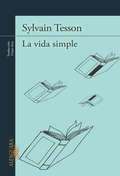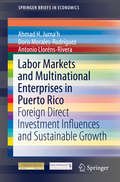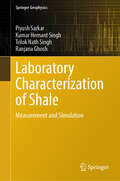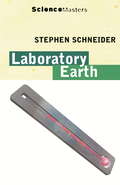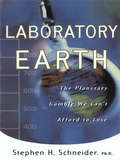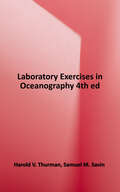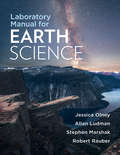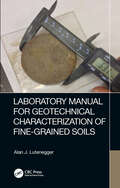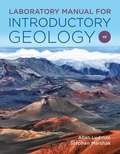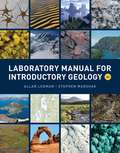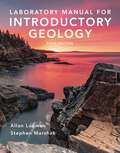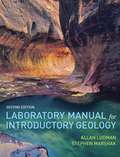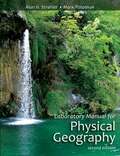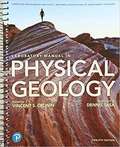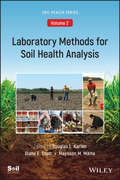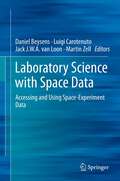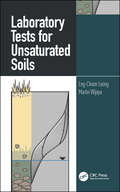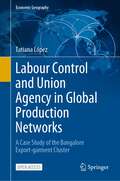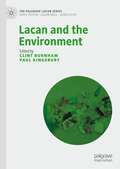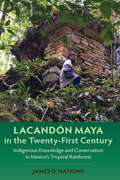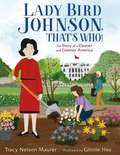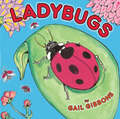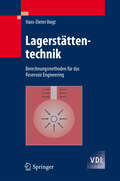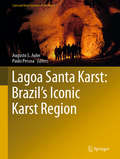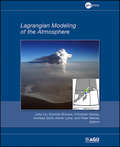- Table View
- List View
La vida simple
by Sylvain Tesson¿Y si la felicidad consistiera en despojarse de todo? Desde el momento en que supe que no podría hacer gran cosa para salvar al mundo, empecé a pensar en instalarme por un tiempo, solo, en una cabaña. Compré una isba de troncos, lejos de todo, en la orilla del lago Baikal. Allí, durante seis meses, a cinco días de marcha del pueblo más cercano, perdido en una naturaleza desmesurada, traté de ser feliz. Creo haberlo logrado. ¿Y si la libertad consistiera en adueñarse del tiempo? ¿Y si la felicidad fuera disponer de soledad, de espacio y de silencio... cosas de las que carecerán las generaciones futuras? La crítica ha dicho:«Uno de los libros más extraordinarios que recuerdo haber leído hace tiempo... De una hermosura pasmosa que atiende a la epifanía.»Ricardo Menéndez Salmón, La Nueva España «Un libro profundamente ecologista... ¡Imprescindible abordar su lectura con un lápiz y/o bloc de notas!»Antonio Lozano, Qué leer «El libro más estimulante de la nueva temporada literaria.»Metro «Una obra preciosa porque muestra el valor incalculable del tiempo que pasa... Una oda a la inmovilidad y el silencio.»Le Monde «El brío de su erudición y la riqueza de sus referencias se realzan con una verdad humana de insólita autenticidad... Un magnífico escritor que ha narrado su experiencia de felicidad.»La Croix «Cultura, buen humor y una profundidad genuina.»Livres Hebdo «Entre la aventura interior y el sueño de una vida salvaje... Un libro magnético.»Le Monde des Livres «Un libro fascinante que propone volver a un modo de vida que suprime lo inútil, que se concentra en lo esencial... Revolucionario.»La Repubblica «Mucho más que un libro: una propuesta vital.»Le Point «Una experiencia no sólo bella de leer, sino también útil para los tiempos de crisis.»Rolling Stone «El viajero más famoso de Francia ha descubierto que quedarse inmóviles puede ser una exploración aún más vertiginosa que dar la vuelta al mundo en bicicleta. Y lo cuenta en un maravilloso libro que ha tenido un éxito enorme en Francia.»Elle «Tesson suscita emociones arrolladoras... Un libro hermoso y profundo.»Fulvio Ervas, La Stampa
Labor Markets and Multinational Enterprises in Puerto Rico
by Ahmad H. Juma'H Doris Morales-Rodriguez Antonio Lloréns-RiveraThis book expresses the reasons to embark on a production management system and begin a journey to a better social and economic life in Puerto Rico. Among the population of Puerto Rico there is a simultaneous presence of a high rate of unemployment and a well-educated workforce. How has this happened? How could the country overcome this economic situation and return to a path of sustainable economic growth in the short and long term? The study here presented introduces an objective and scientific input on these economic issues that are impacting the Puerto Rican society. Achieve greater economic and social welfare in a geographic area is based on increasing individual productivity that workers and employees can unfold in different workplaces, business and industries. The increase in productivity of the economy of Puerto Rico requires both individual effort and enterprise work.
Laboratory Characterization of Shale: Measurement and Simulation (Springer Geophysics)
by Kumar Hemant Singh Ranjana Ghosh Piyush Sarkar Trilok Nath SinghThis book introduces to the reader an analytical procedure to characterize the organic-rich Indian Gondwana shale in terms of its elastic, petrophysical, geochemical, and microstructural properties using state-of-the-art laboratory measurements and accounting for the elastic anisotropy, pore microstructure along with rock physics models, image segmentation techniques, and pore network models. As compared to sandstone, shale possesses a more complex origin, strong heterogeneity, and is anisotropic in nature. This makes the characterization of shale rock and the assessment of the potential of the reservoir extremely challenging. The laboratory-measured properties of the reservoir rock are important for the evaluation of the potential of the reservoir rock. These input parameters are utilized to predict variables, build a petrophysical model, and set up strategies in several domains of petroleum engineering and petrophysics. The authors presented the case studies for the identification of prospective shale formation zones in the Indian Gondwana basin that might be used for commercial gas and/or oil production. The scope of this book covers the interest of all researchers and academicians involved in source-rock characterization at the laboratory scale. Furthermore, the source-rock evaluation methods and their many nuances covered here provide excellent reading for geoscience graduates.
Laboratory Earth (SCIENCE MASTERS)
by Stephen H SchneiderAn extremely readable account on the scientific essentials of the global warming debateThe possibility of global climatic change as a result of increasing numbers of people requiring higher stands of living has spawned an international controversy over the appropriateness of controls on deforestation and energy use. In order to address the political debate it is essential to understand the scientific background that underlies this problem. Laboratory Earth takes the reader on a journey from the dawn of earth's climate and biological evolution through the era of the dinosaurs, past the Ice Age and into the shadowy environmental future increasingly dominated by human activities. In the final analysis it will be human values more than scientific methods that must be applied to decide how to gamble with the fate of the earth.
Laboratory Earth: The Planetary Gamble We Can't Afford To Lose
by Stephen H. SchneiderLaboratory Earth taps the relevant knowledge from physical, biological, and social sciences needed to study the planet holistically. This so-called Earth Systems Science fosters a new way to understand the Earth and our roles as inhabitants, with the purpose of building solutions to the bewildering global environment and overdevelopment. Educational, business, health, and governmental organizations often dissect the world into narrow but highly specialized disciplines--economics, ecology, cardiology, meteorology, glaciology, or political science, to name a few. But real world problems, like urban sprawl, public health, poverty, toxic waste, economic development, the ozone hole, or global warming, do not fit neatly into disciplinary boxes. However, author Stephen Schneider asserts that these contemporary issues must be viewed as systems of interconnected subelements. This is especially true for global environmental problems, since they arise from increasing numbers of people demanding higher standards of living and willing to use the cheapest available technologies to pursue these growth-oriented goals, even if the unintended byproducts include land degradation, toxic pollutants, species extinctions, or global climate change. To first understand and then solve such problems, we must learn to view the Earth and our socioeconomic engine as one integrated system. Schneider, who in the 1970s predicted global warming would become "demonstrable” by the turn of the century, chooses that debate to illustrate how this twenty-first century Earth Systems Science approach works, introducing us to the sharp controversies and highly visible debates among climatologists, ecologists, economists, industrialists, and political interests over the seriousness and solutions to the climate change crisis. He begins with a fascinating journey to the beginning of geologic time on Earth and traces from there the coevolution of climate and life over the next four billion years. Along the way we learn about the Gaia Hypothesis, the demise of the dinosaurs, and the likelihood of an impending ice age. Schneider traces our climatic history not only from the beginning and up to the twentieth century, but deep into the twenty-first as well. He depicts the next one hundred years as a potentially perilous period for climate and life--unless we citizens of Earth recognize and then work to control the unintended global scale experiment we are foisting on ourselves and all other life on "Laboratory Earth. ” This "lab” is not built of glass, wires, and tubes, but of insects, soils, air, oceans, birds, trees, and people. While no honest scientist can claim to have clairvoyant vision into the twenty-first century, Schneider optimistically demonstrates that enough is already known to command our attention and to insure that the juggernaut of human impacts on Earth doesn’t turn into a gamble we can’t afford to lose.
Laboratory Exercises in Oceanography
by Harold V. Thurman Samuel M. SavinA stand-alone lab manual for any intro oceanography lab course.
Laboratory Manual for Earth Science
by Stephen Marshak Allan Ludman Robert Rauber Jessica OlneyGive students the most hands-on, applied, and affordable lab experience. Laboratory Manual for Earth Science engages students with Earth science concepts through an ideal balance of hands-on activities, quantitative calculations, map-based exercises, and critical thinking questions. “Geotours” and “What Do You Think?” exercises in every chapter define the manual’s unique emphasis on applying lab work to real-world site explorations and considering how Earth science concepts inform their lives and the world around them. And a low price with flexible custom options ensures students get the most affordable lab experience.
Laboratory Manual for Geotechnical Characterization of Fine-Grained Soils
by Alan J. LuteneggerThis manual presents procedures for performing advanced laboratory tests on fine-grained soils. It covers characterization tests, which determine soil composition and quantify the individual components of a soil, and behavioral tests, such as the Atterberg Limits tests that demonstrate how the fines fraction of a soil reacts when mixed with water and the Linear Shrinkage Test that demonstrates how much a soil shrinks. The material goes beyond traditional evaluation of basic soil behavior by presenting more advanced laboratory tests to characterize soil in more detail. These tests provide detailed compositional characteristics which identify subtle changes in conditions and vertical variations in the soil, and which help to explain unusual behavior. A unique compilation of information on key soil tests Combines characterization tests with behavior tests The book suits graduate students in geotechnical engineering, as well as practitioners and researchers.
Laboratory Manual for Introductory Geology
by Stephen Marshak Allan LudmanThis lab manual offers a variety of activities for an active, applied student experience and increased flexibility for instructors. Every lab includes "What Do You Think?" exercises in which students apply the course concepts to real-world scenarios. New Geotours Google Earth exercises get students exploring and analyzing real-world sites. A new, unique chapter on global change in which students explore how the Earth will evolve during their lifetime has been added to this edition.
Laboratory Manual for Introductory Geology
by Allan Ludman; Stephen MarshakThe Third Edition has been thoroughly updated to help make your geology lab more active and engaging. This edition features new “What Do You Think” mini-cases that promote critical thinking, new and vastly-improved topographic maps, and updated, detailed reference figures in every chapter.
Laboratory Manual for Introductory Geology (Fifth Edition)
by Stephen Marshak Allan LudmanThe Laboratory Manual for Introductory Geology provides an engaging way to learn geology, focusing on active exploration and real-life applications. Allan Ludman and Stephen Marshak are influential researchers and expert teachers who know how to make geoscience exciting for students. They introduce and reinforce key concepts and skills through rich illustrations, accessible explanations, intuitive labs with easy-to-follow instructions, and pedagogical tools that help students think like geologists.? The manual’s modular chapters make it flexible and easy to assign with any introductory geology textbook, especially Marshak’s Earth: Portrait of a Planet and Essentials of Geology. To make the lab experience more dynamic, the manual is supported by interactive resources, including 3D models of geologic specimens, videos, animations, interactive simulations, and Google Earth activities.? New to this edition: A reorganized Table of Contents designed to follow the typical sequence of the geology lab course. Revised and expanded discussion of plate tectonics, which is introduced in Ch. 2: The Way the Earth Works: Examining Plate Tectonics and further explored in a brand-new Ch. 10: Plate Tectonics II: A Deeper Understanding, which builds on the coverage of minerals, rocks, rock deformation, and earthquakes presented in the preceding chapters. New and revised exercises and activities based on reviewer feedback, including the earthquake epicenter exercise central to Ch. 9 and two groundwater pollution exercises in Ch. 14.? Coverage of recent geological events, including earthquakes, floods, hurricanes, tsunamis, volcanic eruptions, accelerating climate change, and glacial retreat. This purchase offers access to the digital ebook only.
Laboratory Manual for Introductory Geology (Second Edition)
by Stephen Marshak Allan LudmanThe second edition contains inquiry based exercises, rock group labs, and a modern treatment of geologic mapping.
Laboratory Manual for Physical Geography
by Alan H. Strahler Mark PotosnakThis student-friendly, interactive lab manual presents activities and experiments that enhance students’ ability to both visualize and understand physical geographic topics. In a clear and concise tone, the manual requires students to first apply information they learned and then to critically evaluate the information.
Laboratory Manual in Physical Geology
by Dennis Tasa Vincent S. Cronin American Geological Institute Staff National Association of Geoscience Teachers StaffLaboratory Manual in Physical Geology offers an inquiry and activities-based approach that builds skills and gives students a complete learning experience in the lab. This user-friendly lab manual examines the basic processes of geology and their applications to everyday life, featuring an exceptional illustration program by Dennis Tasa and contributions from over 200 highly regarded geologists and geoscience educators. <P><P> With the 12th Edition, lead author Vince Cronin and the newly formed NAGT editorial panel deliver the latest data and science, including new climate/environmental change and hazards/disasters lab activities.
Laboratory Methods for Soil Health Analysis (ASA, CSSA, and SSSA Books #192)
by Douglas L. Karlen Diane E. Stott Maysoon M. MikhaLaboratory Methods for Soil Health Analysis Analyzing, comparing, and understanding soil health data The maintenance of healthy soil resources is instrumental to the success of an array of global efforts and initiatives. Whether they are working to combat food shortages, conserve our ecosystems, or mitigate the impact of climate change, researchers and agriculturalists the world over must be able to correctly examine and understand the complex nature of this essential resource. These new volumes have been designed to meet this need, addressing the many dimensions of soil health analysis in chapters that are concise, accessible and applicable to the tasks at hand. Soil Health, Volume Two: Laboratory Methods for Soil Health Analysis provides explanations of the best practices by which one may arrive at valuable, comparable data and incisive conclusions, and covers topics including: Sampling considerations and field evaluationsAssessment and interpretation of soil-test biological activity Macro- and micronutrients in soil quality and health PLFA and EL-FAME indicators Offering a practical guide to collecting and understanding soil health data, this volume will be of great interest to all those working in agriculture, private sector businesses, non-governmental organizations (NGOs), academic-, state-, and federal-research projects, as well as state and federal soil conservation, water quality and other environmental programs.
Laboratory Science with Space Data
by Martin Zell Luigi Carotenuto Jack J.W.A. van Loon Daniel BeysensFor decades experiments conducted on space stations like MIR and the ISS have been gathering data in many fields of research in the natural sciences, medicine and engineering. The EU-sponsored Ulisse Internet Portal provides metadata from space experiments of all kinds and links to the data. Complementary to the portal, this book will serve as handbook listing space experiments by type of infrastructure, area of research in the life and physical sciences, data type, what their mission was, what kind of data they have collected and how one can access this data through Ulisse for further research. The book will provide an overview of the wealth of space experiment data that can be used for research, and will inspire academics (e.g. those looking for topics for their PhD thesis) and research departments in companies for their continued development.
Laboratory Tests for Unsaturated Soils
by Eng-Choon Leong Martin WijayaThe testing of unsaturated soils requires greater care and effort than that of saturated soils. Although unsaturated soil mechanics has been embraced by geotechnical engineering, engineering practice has not yet caught up as the characterization of unsaturated soils is difficult and time-consuming, and made harder still by a lack of standards. Laboratory Tests for Unsaturated Soils collates test procedures to cover all laboratory tests for characterising unsaturated soils. It covers the background, theory, test procedures, and interpretation of test results. Each test procedure is broken down into simple stages and described in detail. The pitfalls of each test and the interpretation of the test results are explained. Test data and calculation methods are given, along with many numerical examples to illustrate the methods of interpretation and to offer the presentation of typical results. The book is especially useful for students and researchers who are new to the field and provides a practical handbook for engineering applications.
Labour Control and Union Agency in Global Production Networks: A Case Study of the Bangalore Export-garment Cluster (Economic Geography)
by Tatiana LópezThis book puts Indian garment workers and their organisations at the centre of the analysis. Taking the Bangalore export-garment cluster as a case study, the book explores the conditions that enable but also constrain the capacities of garment workers’ unions to build collective power vis-à-vis employers and thereby improve their conditions. Drawing on theoretical concepts from labour geography, relational economic geography, and Global Production Network (GPN) analysis, the book highlights, on the one hand, how the complex labour control regime in the Bangalore export-garment cluster poses manifold challenges and constraints for workers’ and unions’ collective agency. On the other hand, the book illustrates the various networked agency strategies that local garment unions in Bangalore have developed over the years to overcome these constraints by tapping into coalitional power resources from worker, consumer and labour rights organisations in the Global North.This book is therefore highly relevant for economic geographers and other scholars interested in dynamics of labour and development in GPNs as well as for unionists and labour rights activists committed to improving working conditions in the global garment industry.This is an open access book.
Lacan and the Environment (The Palgrave Lacan Series)
by Clint Burnham Paul KingsburyIn this exciting new collection, leading and emerging Lacanian scholars seek to understand what psychoanalysis brings to debates about the environment and the climate crisis. They argue that we cannot understand climate change and all of its multifarious ramifications without first understanding how our terrifying proximity to the real undergirds our relation to the environment, how we mistake lack for loss and mourning for melancholy, and how we seek to destroy the same world we seek to protect. The book traces Lacan’s contribution through a consideration of topics including doomsday preppers, forest suicides, Indigenous resistance, post-apocalyptic films, the mathematics of climate science, and the relevance of Kant. They ask: What can you do if your neighbour is a climate change denier? What would Bartleby do? Does the animal desire? Who is cleaning up all the garbage on the internet? Why is the sudden greening of the planet under COVID-19 no help whatsoever? It offers a timely intervention into Lacanian theory, environmental studies, geography, philosophy, and literary studies that illustrates the relevance of psychoanalysis to current social and environmental concerns.
Lacandón Maya in the Twenty-First Century: Indigenous Knowledge and Conservation in Mexico's Tropical Rainforest (Maya Studies)
by James D. NationsFrom the ancient traditions of the Lacandón Maya comes an Indigenous model for a sustainable future Having lived for centuries isolated within Mexico’s largest remaining tropical rainforest, the Indigenous Lacandón Maya now live at the nexus of two worlds—ancient and modern. While previous research has focused on documenting Lacandón oral traditions and religious practices in order to preserve them, this book tells the story of how Lacandón families have adapted to the contemporary world while applying their ancestral knowledge to create an ecologically sustainable future. Drawing on his 49 years of studying and learning from the Lacandón Maya, James Nations discusses how in the midst of external pressures such as technological changes, missionary influences, and logging ventures, Lacandón communities are building an economic system of agroforestry and ecotourism that produces income for their families while protecting biodiversity and cultural resources. Nations describes methods they use to plant and harvest without harming the forest, illustrating that despite drastic changes in lifestyle, respect for the environment continues to connect Lacandón families across generations. By helping with these tasks and inheriting the fables and myths that reinforce this worldview, Lacandón children continue to learn about the plants, animals, and spiritual deities that coexist in their land. Indigenous peoples such as the Lacandón Maya control one-third of the intact forest landscapes left on Earth, and Indigenous knowledge and practices are increasingly recognized as key elements in the survival of the planet’s biological diversity. The story of the Lacandón Maya serves as a model for Indigenous-controlled environmental conservation, and it will inform anyone interested in supporting sustainable Indigenous futures. A volume in the series Maya Studies, edited by Diane Z. Chase and Arlen F. Chase
Lady Bird Johnson, That's Who!: The Story of a Cleaner and Greener America
by Tracy Nelson MaurerLady Bird Johnson, That's Who! is Tracy Nelson Maurer's lively picture book biography of Lady Bird Johnson, with a focus on her environmentalist passion and legacy as First Lady.Who fought to stop pollution? Who helped make America cleaner and greener? Lady Bird Johnson, That's Who!Claudia Alta Taylor was a lonely girl, shy as a butterfly growing up in Texas. She never dreamed she'd blossom into a visionary leader whose love for wildflowers, beautiful landscapes, and building community compelled her to lead the effort to combat pollution in the United States. A lifelong environmentalist, Lady Bird Johnson embraced her platform as First Lady to promote policy that beautified America’s roadways, waterways and parks, inspiring people to take pride in the places they live.With elements of women’s history, civics, and conservationism, this is a timely and informative picture book biography.
Ladybugs
by Gail GibbonsEverything you ever wanted to know about ladybugs— and why they're crucial to our environment. When you think of a ladybug, you might picture a little red beetle with seven black spots on its back—but did you know there are thousands of types of ladybugs, spread across the world? With her signature combination of simple text, clear illustrations, and simple diagrams, Gail Gibbons explores the world of ladybugs. These small beetles live on six of the seven continents, ranging in size, markings, and coloration. Follow a ladybug through the four stages of its development from egg to adult, and learn about its behavior and habitat—plus, how little ladybugs help protect crops by eating harmful insects. Bright illustrations and an easy-to-read text make this ideal for young readers studying the natural world. A page of quick ladybug facts and resources for learning more are included.
Lagerstättentechnik
by Hans-Dieter VoigtIn dem Band wird die Durchführung von lagerstättentechnischen Felduntersuchungen erläutert und ihre Anwendung anhand vieler Beispiele demonstriert. Ausgehend von Modellvorstellungen werden Interpretationsmethoden für Öl-, Wasser- und Gastests in vertikalen und horizontalen Bohrungen gezeigt. Behandelt werden auch Analysemethoden für hydraulische Fracs, Gestängetests und Verfahren zur Bewertung von Reserven. Der Anhang enthält Korrelationsdiagramme mit den relevanten Eigenschaften von Fluiden (Öl, Wasser, Erdgas und CO2) und von porösen Materialien.
Lagoa Santa Karst: Brazil's Iconic Karst Region (Cave and Karst Systems of the World)
by Augusto S. Auler Paulo PessoaThis book discusses the Lagoa Santa Karst, which has been internationally known since the pioneering studies of the Danish naturalist Peter Lund in the early 1800s. It covers the speleogenesis, geology, vegetation, fauna, hydrogeology, geomorphology, and anthropogenic use of the Lagoa Santa Karst and is the first English-language book on this major karst area. The area, which has been at the heart of the debate on the origin and age of human colonization in the Americas, is characterized by a classical and scenic karst landscape with limestone cliffs, karst lakes and karst plains, in addition to numerous solution dolines. More than 1,000 caves have been documented in the area, many with significant archeological and paleontological value. Despite its great importance, the Lagoa Santa Karst faces severe environmental threats due to limestone mining and the expansion of the metropolis of Belo Horizonte and its surrounding towns. The growing recognition of the area’s remarkable significance has led to increasing concern, and a number of protected areas have now been established, improving the conservation status of this landmark karst area.
Lagrangian Modeling of the Atmosphere
by John Lin Peter Webley Dominik Brunner Christoph Gerbig Andreas Stohl Ashok LuharPublished by the American Geophysical Union as part of the Geophysical Monograph Series, Volume 200. Trajectory-based ("Lagrangian") atmospheric transport and dispersion modeling has gained in popularity and sophistication over the previous several decades. It is common practice now for researchers around the world to apply Lagrangian models to a wide spectrum of issues. Lagrangian Modeling of the Atmosphere is a comprehensive volume that includes sections on Lagrangian modeling theory, model applications, and tests against observations. Published by the American Geophysical Union as part of the Geophysical Monograph Series. Comprehensive coverage of trajectory-based atmospheric dispersion modeling Important overview of a widely used modeling tool Sections look at modeling theory, application of models, and tests against observations
